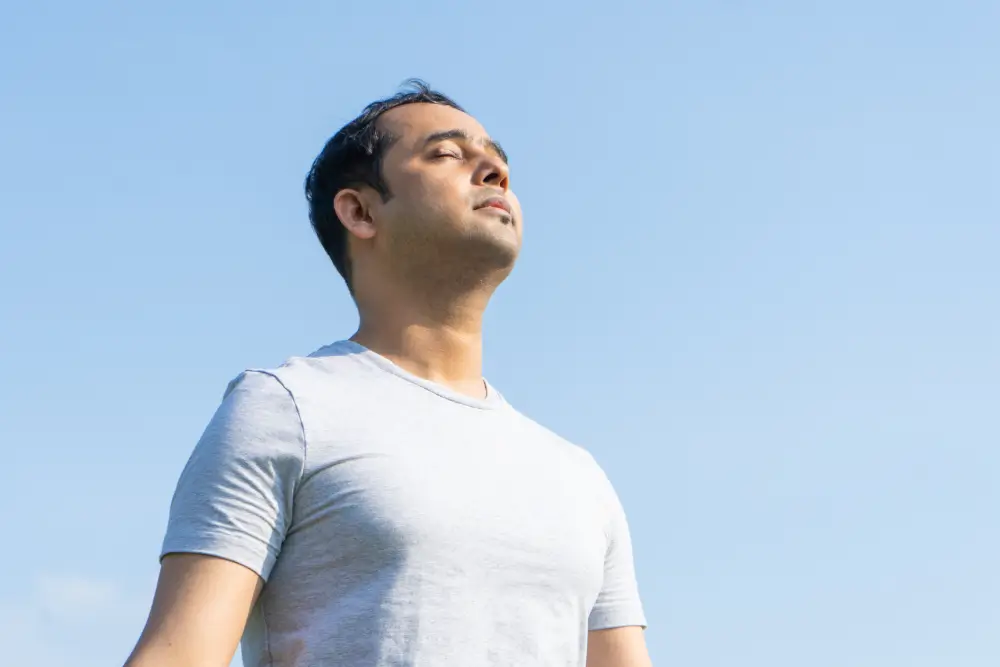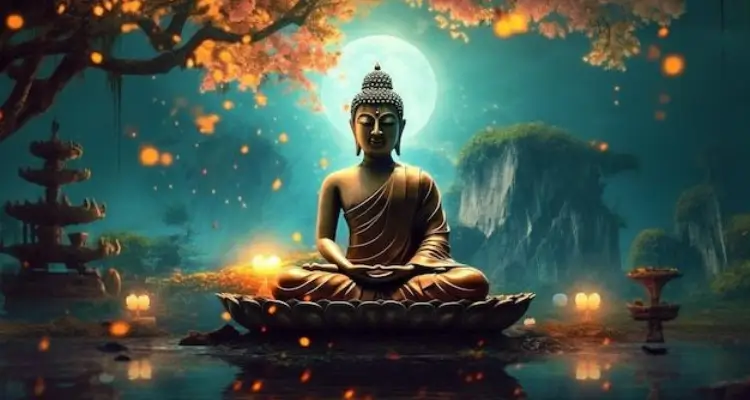Siddhartha Gautama, later known as Buddha, is one of the most revered figures in world history. His life, marked by extraordinary events, became the stage for profound transformations that resonate to this day. Born as a prince, his journey transcended the barriers of palace luxury and comfort, leading him to an unrelenting search for the truth about human suffering and the meaning of life. Prince Siddhartha became famous not only for his enlightenment but also for the teachings he shared after his transformative experience.
Siddhartha’s life is shrouded in a series of legends and myths that have been passed down through generations. The story of the prince who becomes a spiritual leader capable of attaining awakening piques the interest of scholars and laypeople alike. Although the stories surrounding his life are often described in a mythological manner, it is important to reflect on them in the light of modern knowledge, without losing sight of the depth of his teachings and the impact they had on humanity.
These legends, which involve extraordinary events such as his birth marked by divine signs and his first steps as an enlightened being, must be analyzed with a critical and contextualized understanding. Interpreting these myths through the lenses of psychology, philosophy, and contemporary history helps us see the complexity of his life and his quest for answers to the existential questions we all face.
In this article, we will explore the life of Siddhartha Gautama from his birth to his moment of spiritual awakening. Through this journey, we will understand how his experiences and the myths surrounding his figure help us reflect on the concepts of suffering, wisdom, and transcendence. Therefore, the life of Prince Siddhartha is much more than a simple story of personal transformation; it is an invitation to reflect on the fundamental questions of human existence.
The Legend of Siddhartha’s Birth
The story of Siddhartha Gautama, later known as Buddha, is shrouded in legends that highlight his spiritual and divine importance. One such legend is the prophecy that foretold Siddhartha’s future, declaring that he would become either a great king or an unmatched spiritual leader. The prophecy predicted that he would be a prominent leader, either as a powerful ruler or as an ascetic, a monk who would seek enlightenment away from the wealth and mundane power. This prophecy deeply troubled his father, King Suddhodana of the Shakya clan, who hoped his son would follow in his royal footsteps and continue the family legacy.
Fearing that the prophecy might come true and that his son might become an ascetic, King Suddhodana sought to isolate Siddhartha from the outside world. He tried to shield him from the realities of life, such as old age, sickness, and death, in hopes of preventing him from experiencing the existential unease that would eventually lead him to spiritual awakening. Siddhartha was raised in an environment of luxury, comfort, and indulgence, with no exposure to the suffering of the world. However, this isolation was only temporary, as events that would change the course of his life were soon to unfold.
Siddhartha’s mother also plays a key role in the legends surrounding his birth. It is said that while pregnant, she had a deep and symbolic dream. She dreamt of a white elephant entering her womb, a symbol of strength, wisdom, and power in Indian tradition. This dream was interpreted as a divine sign that the child she was carrying would be of great significance. The elephant, a sacred animal, symbolized not only wisdom but also the spiritual power that Siddhartha would one day embody.
Siddhartha’s birth was accompanied by a series of miracles. According to the legend, as he was born, a rain of flowers and nectar fell from the sky, and the atmosphere was filled with peace and serenity. Even more remarkable was the fact that immediately after his birth, Siddhartha walked and spoke. He raised his hands, pointing to the sky and the earth, and uttered the words, “Between heaven and earth, I am the most honored.” This moment was seen as a sign that he was a special figure, destined for greatness.
These legends not only highlight Siddhartha’s significance but also reflect the effort to integrate Hindu deities into his life story. By creating such myths, people sought to explain Siddhartha’s birth and future enlightenment as being divinely ordained, reflecting the deep connection between Buddhism and the local religious culture. These stories, rich in symbolism, were shaped to honor the Vedic gods and demonstrate that Siddhartha was in tune with divinity even before he became Buddha.
The Life of Siddhartha as a Prince
Siddhartha Gautama was raised in a palace filled with luxury and comforts, shielded from the hardships of the outside world. His father, King Suddhodana, believed that by keeping his son isolated, he could protect him from the possibility of becoming an ascetic, as predicted by the prophecy that Siddhartha would become a great spiritual leader. The king wanted his son to follow his path, assuming the role of a ruler and governing with power and wealth. Therefore, the prince was kept away from poverty, suffering, or anything that might cause Siddhartha to question his destiny and his privileged life. He grew up in a world of pleasures, with all his needs and desires met, but without any experience of life’s real struggles.
When Siddhartha reached the age of 28, married with a young child, he began to question the meaning of life. Tired of the luxurious life and restless with the idea of living without understanding the realities of the world, he decided to leave the palace in an attempt to discover the truth. His departure from the palace, a historic event in his spiritual journey, marked the first step for Siddhartha to understand what lay beyond material comfort. It was at this moment that he encountered human suffering, something his father had carefully shielded him from throughout his life.
During one of his excursions outside the palace, Siddhartha had a pivotal encounter with human suffering. He saw an old man, a sick man, and, finally, a dead body, which deeply disturbed him. He had never before been confronted with the reality of aging, illness, and death, and this experience shook him profoundly. Siddhartha realized that, although he had been sheltered in his palace, these realities were inevitable and were part of the human condition. But what truly impacted him was seeing an ascetic, a person who had chosen to live in austerity, seeking self-knowledge and enlightenment. The peaceful expression and serenity on the ascetic’s face deeply impressed Siddhartha and made him question the true meaning of life.
The legend of Siddhartha at this point in his life reflects the existential restlessness he was experiencing. Confronted with the inevitability of death and suffering, he began seeking answers to understand what truly mattered. It was as though he was caught between the luxurious life that surrounded him and the search for something deeper, something that transcended material existence. These experiences would later lead him to abandon his palace and comfortable life in search of a spiritual path that would lead him to the truth about the nature of existence.
The Ascetic Life and the Awakening
In his relentless quest for the meaning of life, Siddhartha decided to abandon his life as a prince and all the luxuries that came with it. He detached himself from everything he knew, leaving behind his wife and child, cutting his hair as a symbol of his transformation. He dressed as an ascetic, dedicating himself to a life of austerity and renunciation. This abandonment was not only physical but also emotional and mental. Siddhartha sought a path that would lead him to understand the deeper truths of existence, and he believed that a life of pleasure and wealth could not provide the answers he sought. Detachment was the first step in the transformation that would lead him to enlightenment.
During his journey, Siddhartha sought the teachings of great spiritual masters. He trained with Alara Kalama and Ramaputra, two renowned masters of the time, who taught him rigorous meditation techniques and ascetic practices. Siddhartha fully embraced these teachings, adopting a strict discipline. His body, weakened by hunger and deprivation, became extremely thin, and he almost lost his life due to his relentless pursuit of spiritual discipline. His devotion to asceticism was so intense that it reached a point where his health was seriously compromised, and he realized that extreme denial of the body would not lead him to the awakening he so desperately sought.
It was then that a young woman named Sujata came into his life, offering him a bowl of rice and milk, a simple but nourishing food. This act of kindness restored his strength, allowing him to regain the energy needed to continue his journey. Sujata’s nourishment was a crucial moment in Siddhartha’s life, as he realized that balance was essential in his search for the truth. It was no longer about the pursuit of absolute denial but rather understanding the need for balance between the body and mind. This marked a turning point in his spiritual journey.
After regaining his strength, Siddhartha sat beneath a tree, determined to achieve enlightenment. He entered into deep, uninterrupted meditation, undisturbed by the distractions around him. For seven hours, he meditated, confronting his own doubts and inner suffering, until, finally, he attained awakening. In that moment, Siddhartha became the Buddha, “the one who awakened.” He understood the universal truths of life, such as suffering, the origin of suffering, and the path to its cessation. Siddhartha’s awakening marked not only his personal transformation but also the beginning of a new spiritual path for all those who would follow his words and teachings.
The Life as a Teacher
After attaining enlightenment, the Buddha embarked on his mission to share the wisdom he had gained. His first sermon was a pivotal moment, known as the Sermon on the Four Noble Truths, in which he introduced his disciples to the fundamental principles of his teachings. These truths address suffering (dukkha), its origin, the possibility of overcoming it, and the path to the cessation of suffering. The Noble Eightfold Path was introduced as the practice that leads to the cessation of suffering, consisting of eight essential components: right understanding, right intention, right speech, right action, right livelihood, right effort, right mindfulness, and right concentration. The clarity of his words, combined with the depth of his vision, profoundly touched those willing to listen and practice his teachings.
For 40 years, the Buddha devoted himself tirelessly to teaching and spreading his vision. He traveled across various regions of India, accepting disciples from all backgrounds, from the humblest to renowned spiritual masters. His teachings made no distinction between social classes or origins; he believed that everyone had the capacity to attain enlightenment. With each new follower, the Buddha conveyed not only the teachings on overcoming suffering but also the importance of constant practice and inner reflection. He established a solid community of disciples, the Sangha, which became the foundation for the spread of Buddhism, allowing his message to reach future generations.
Despite his immense wisdom and deep spiritual realization, the Buddha maintained exemplary humility throughout his life. His ability to convince older and more experienced spiritual masters to join him in the pursuit of truth was a clear demonstration of his unparalleled humility and wisdom. Many who were initially skeptical of his doctrine eventually joined the Sangha, recognizing his spiritual authority and the depth of his teachings. The Buddha’s humility, combined with his ability to perceive the truth in all things, made him not only a renowned teacher but also an inspiration for all those seeking enlightenment.
The Death of Buddha
The life of Siddhartha Gautama, the Buddha, came to an end around 483 BCE, when he passed away at the age of 84. His death followed a period of suffering marked by a bloody diarrhea, which reflected the fragility and humanity of the human being, even for one who had attained enlightenment. However, this death was not an end, but rather a transition to a new cycle. Buddha’s teachings continued to live on, for he always stated that his death did not mean the disappearance of the truth, but the continuation of the path for those who were willing to follow it. His legacy of wisdom remained immortal, and the Sangha continued to grow, keeping the principles of the Noble Eightfold Path and the Four Noble Truths alive.
Buddha’s death is, in many ways, a final lesson about suffering. While he had attained enlightenment and shown the way to overcome suffering, his death did not escape the human condition of facing the impermanence of life and inevitable suffering. This event symbolizes Buddha’s true understanding of the nature of existence: all, regardless of their spiritual level, are affected by death and suffering. Yet, his death also underscored his greatest message: everyone has the capacity to attain enlightenment, regardless of their struggles or human frailty. Thus, Buddha’s death is not seen as a defeat, but as an example of acceptance of suffering and the impermanence of life—central principles in his philosophy.
Historical Verification
The teachings of Buddha were carefully recorded and preserved over the centuries, ensuring that his wisdom would not be lost over time. Buddhist texts, such as the Tripitaka, which consists of sutras, monastic rules, and commentaries, were transcribed and passed down by generations of monks and scholars. These writings, maintained in ancient languages such as Pali and Sanskrit, formed the foundation for the preservation of Buddha’s teachings. Furthermore, modern academic study, through the analysis of historical and archaeological documents, has helped validate the existence of Siddhartha Gautama and enriched our understanding of his life and teachings.
Interpreting the legends surrounding Buddha is an important aspect of deeply understanding his history. The narratives involving miraculous events, such as Buddha’s birth or his final meditation, can be viewed symbolically, representing Siddhartha’s spiritual understanding and journey of self-realization. For a more rigorous analysis, Zen masters like Matsu emphasized the importance of distinguishing between historical truth and the mystical interpretation of the stories. By balancing historical reality with the symbolism of the legends, we can better understand the true essence of Buddha’s teaching and the lasting impact of his philosophy.
Conclusion
The journey of Siddhartha Gautama, from his birth to his awakening as the Buddha, is a profound and universal story of the search for meaning and wisdom. Throughout his life, he faced the fundamental questions of human existence — suffering, death, and the quest for a greater purpose. His journey from prince to ascetic, and then to an enlightened teacher, reflects an inner search and transformation that anyone can relate to, regardless of culture or context. Buddha’s life is not just an ancient story, but a timeless lesson on how to confront life’s difficulties with wisdom, compassion, and equanimity.
Siddhartha’s path, his doubts, transformations, and ultimately, his teachings, offer valuable lessons to all those seeking to understand and practice Buddhism. His journey teaches us that the pursuit of awakening and enlightenment is not just for exceptional beings, but is within reach of anyone willing to embark on a path of deep reflection, detachment, and compassion. Buddhism, as both a philosophy and a practice, provides a guide for dealing with life’s challenges and finding inner peace, offering a message of hope and liberation to all who seek to live more fully and consciously.

































